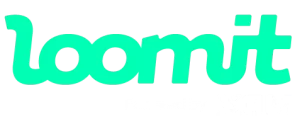Ad monetization teams need to start acting more like product teams

Let’s say you hire THE world’s undisputed best product owner to work on your app. What percentage of their ideas do you think will actually make it to production? At what point would you say the product is “done” evolving?
An optimistic answer is 30% of ideas ship (and of course the product is never done). Continuous experimentation is the expectation. The more you test, the faster you find ways to improve your app. Failure along the way is expected.
Admon today seems to play by a different set of rules. Everything is a search for instant wins; “hacks” to move the needle immediately.
This is partly structural: admon teams are (mostly) measured on short-term performance (CPM, ads ARPAU) and not LTV contribution. Understandably, this often leads to friction between product and admon: product fears that you improve ad metrics at the expense of product.
Focusing on LTV requires product thinking. Structured hypotheses, controlled experiments, willingness to fail and a feedback loop that connects user experience with revenue.
It also requires infrastructure. Product teams have feature-flag systems, AB testing tools, and analytics that make experimentation scalable. Monetization teams on the other hand rarely do. For the most part, they rely on reporting dashboards (and often good old spreadsheets).
Resource scarcity plays a role as well. Admon and product teams often compete for engineering, and given that the admon role doesn’t include “Owner” in the title you can imagine who wins.
This is the heart of what we’re trying to solve. Yes, we typically deliver an immediate boost to ARPAU, but that’s not where the real pain point is. It’s not where you should focus.
Loomit provides the infrastructure admon teams need to be able to test as if they were product, in a way that gives them freedom from the resource limitations of a shared engineering team.
We give them the tech they need and evolve it over time. In the past, iterative and granular approach to admon may have seemed unrealistic. Waterfalls were complex enough and the tools simply weren’t there.
Times have changed however. Managing multiple experiments in parallel, optimizing in real time at a granular level, and measuring outcomes with precision is doable with tools like www.loomit.ai.
As AI continues to simplify segmentation and optimization, the question isn’t whether this level of sophistication is feasible, but whether studios are prepared for it.
The market is unforgiving to teams that fail to take a holistic view of monetization. We argue that this is the new reality, whether studios (and mediations, and networks..) like it or not.
It will be a painful ride for those who fail to see the change. This is how sustainable studios will be built going forward
